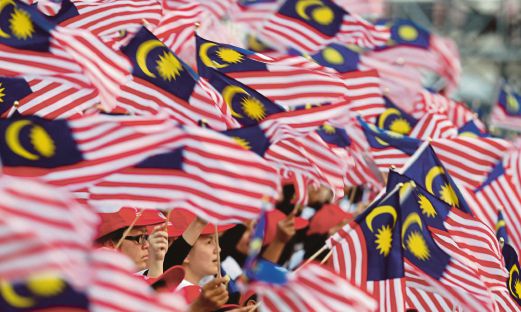In recent years, we have witnessed growing polemics relating to race and religious issues. Certain groups claiming exclusivity to the word “Allah”, the racial overtones of the riot at Low Yat Plaza and the ever-ambiguous motives of the Red Shirt Rally, among other ethno-religious conflicts, had perplexed many Malaysians.
Nowadays, one will not miss being greeted with “Salam 1Malaysia” when attending a government event. But, what is 1Malaysia? Different quarters may have distinct ideas on what the slogan really means.
The main gist of 1Malaysia, one may gather, is to promote national unity. “Unity in diversity” is definitely a phrase we are more than familiar with, which had been used time and time again to describe our beloved country.
Has this slogan been successful in uniting Malaysians? As a country of diverse races, cultures and religions, do we really stand united despite our differences?
The terms “national integration” and “national unity” are often used interchangeably and there is a need to clearly define what they mean. National integration is a process, much like a precursor to national unity — our end goal.
When national unity is mentioned, the first thing that comes to mind is race relations, but we often fail to realise that the term encompasses more than just that. National integration also addresses religion, the socio-economic class, and the urban and rural divide, among many others.
A homogenous cluster easily falls prey to the herd mentality to put the blame on the other group which fares better socially and/or economically. Self-inflicted or not, it is simpler to direct the blame on others for one’s predicament. It is simply human nature.
The underlying cause of most of these conflicts, however, do not necessarily stem from a race or religious standpoint, but rather the fear of falling behind.
What made matters worse?
One of our biggest hurdles is our inability to separate race from religion. There had been accounts of groups chanting “Allahu Akbar” during the Low Yat Plaza riot and the Red Shirt Rally. One simply cannot fathom how these disagreements could have mutated into a religious march. Did these irresponsible groups hope to gather more support by feigning a threat to Islam?
There had been reports of severed pig heads found in mosques. There had also been some ruckus over a cross sign on a church building in Taman Medan citing its supposed ability to cause confusion and shake the Islamic faith of Muslim youths in the area.
A huge disappointment that Malaysians face when there seems to be such conflicts is the absence of the religious bodies and their inability to come forth to condemn acts which may cause further disintegration.
These bodies had been so preoccupied with moral policing, almost borderline obsessed with what both Muslims and non-Muslims can or cannot do that they failed to address the elephant in the room; the dwindling faith in religion.
They also failed to recognise or address that both the riot and the rally actually had no religious connotations. This created even more tension and further alienated many others who were not of the same opinion.
Religious bodies should be focusing on strengthening the foundation of faiths and promoting inter- faith harmony and tolerance, instead of assuming and insisting on one’s supremacy. After all, how does one promote understanding without any intellectual discourse?
This trend that lacks respect, tolerance and understanding of other races and religions, although not widespread, is nevertheless worrying. If these are the ideals of unity that the state is promoting, I’m afraid, we are faced with many disenfranchised Malaysians who would not subscribe to them, which then pushes us even further from achieving our end goal.
What is the way forward? There is a need to review the existing policies and their implementation strategies. It is high time we reassessed the current situation and tailor the existing policies to be more inclusive. Doing this, in one way or another, may assist in the reconciliation of opposing factions.
The reality is, national unity — no matter how many slogans we try to come up with to promote it — will always seem like a far-fetched idea when you actively and continuously differentiate Malaysians. The affirmative action had somewhat mitigated the dissatisfaction of one race for another to some degree but evidently, the distrust on all sides still exists.
The question is then, will unity be possible, whilst the status quo remains intact?
This article first appeared in The New Straits Times on 12 April 2016.





